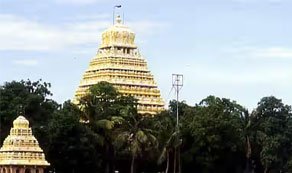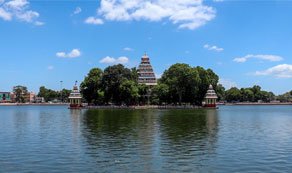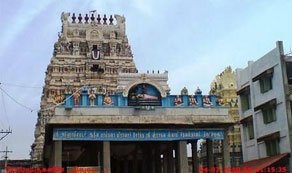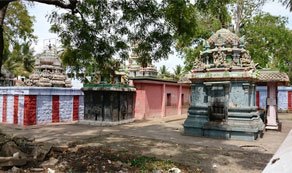Mukteeswarar Temple

Architecture:
The structural temple we see here was built in the early part of the 17th century by Muthu Veerappa Nayakar, the brother of Tirumalai Nayakar, of the Nayaks, who were the then kings of Madurai.
History:
Once, Sage Durvasa worshipped Siva at Kailasam and received a garland. Thinking it would befit Indra to have it, the sage gave the garland to him. Filled with pride that he was the lord of the devas, Indra kept the garland on the head of his elephant, Airavata. But the garland irritated the elephant, who shook it off and trampled on it. Shocked at these events, the sage cursed both Indra and Airavata, as a result of which the celestial elephant (white with four tusks) lost its divinity and became a normal wild elephant. For a hundred years, Airavata worshipped at many Siva temples, and as part of this pilgrimage, he came here because the place was full of vilvam trees (which is also the sthala vriksham of this temple) and worshipped Siva here. Seeing that Airavata was overcome with remorse, Siva asked him to go to the Sundareswarar temple at Madurai, where Airavata was eventually relieved of the curse.
Before leaving, Airavata created a settlement here called Airavatanallur, which over time came to be called Mukteeswaram, as Siva had blessed Airavata here. So, the Lord here is named Mukteeswarar—the One who provides relief to his devotees.
Special:
Eka Pada Trimurti (depicting Vishnu, Siva, and Brahma in one murti, standing on one leg), and the impossibly spectacular Veenadhara Dakshinamurti, in addition to the Dakshinamurti in the koshtam. Worshipping Veenadhara Dakshinamurti here is believed to help gain proficiency in education and music. Even the murti of Chandikeswarar is exquisite, as are several of the wall and ceiling art and carvings, including the Rasi mandalam.












